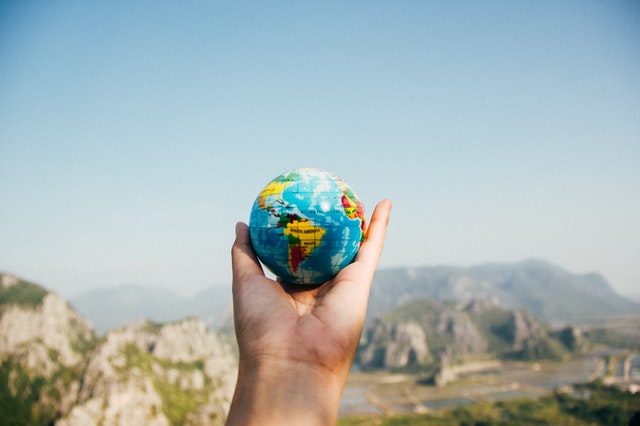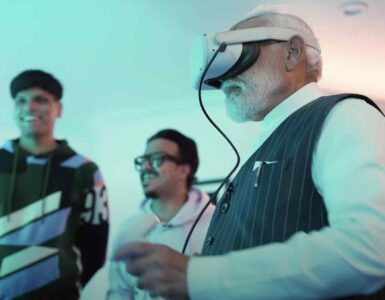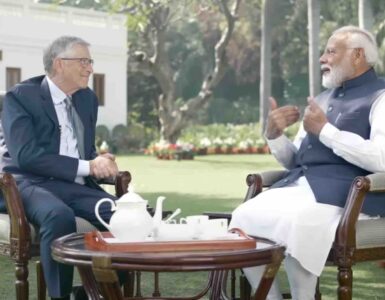- Documentary Name: Breaking Boundaries: The Science of Our Planet
- Director: Jonathan Clay
- Run Time: 1h 13m
- Year of Release: 2021
- Our Rating: ⭐⭐⭐⭐⭐ (5 stars)
There are several scientists across the globe that have made predictions about climate change and the state we are in, the documentary Breaking Boundaries presents their views and a “hope that there is a way out of this crisis”.
As scientific findings continue to evolve, they provide us with different dimensions to look at our Planet.
Breaking Boundaries: The Science of Our Planet, presents a viewpoint from Sweden-based scientist Johan Rockström and his colleagues from the scientific community. Johan Rockström is the joint director of the Potsdam Institute for Climate Impact Research in Germany.
The premise of the documentary is the remarkable Holocene period and how over the last few years we are moving away from it, due to global warming.
Holocene is a course of time that started about ten thousand years ago, that saw the global mean temperature of the Earth remain stable. During this period the Earth’s temperature only fluctuated between plus and minus one which was largely possible because the carbon dioxide concentration in the environment remained steady.
This Holocene ensured that humanity flourished in this period as we went through a phase of predictable seasons. Farming was made possible due to these reliable weather patterns, which provided a stable food supply needed to develop human civilizations. Along with the stable weather, the Holocene also helped in the stability of two permanent icecaps, rivers, forests, clean air, and an abundance of life.
The documentary says that Holocene has ended and we have entered a period of Anthropocene, the age of humans. As human are primary drivers of change through our activities.
According to Johan Rockström, in the last 50 years, emitting a massively large amount of carbon dioxide has destabilized these weather patterns as the global mean temperature has moved beyond one degree.
Through the research done by Johan Rockström and other scientists from various fields, Breaking Boundaries highlights nine areas of the Planet’s boundaries that are needed to keep it sustainable. Scientists further argue there are certain tipping points of each of these boundaries, beyond which it will be beyond repair, and we risk triggering a collapse of ecosystems.
The first boundary that this documentary mention is the level of carbon dioxide concentration in the atmosphere.
In 1988, we reached 350 parts per million (PPM) of carbon dioxide in the Earth’s atmosphere and have therefore crossed this boundary. At the current stage, we have entered the danger zone, as the carbon dioxide in the Earth’s atmosphere has reached 415 parts per million (PPM). As per scientific research if we cross 450 PPM we will get into the high-risk zone, which is like an irreversible tipping point.
The impact of breaking this boundary is already visible in form of droughts, floods, heatwaves, and accelerated melting of ice. We can significantly observe the consequence of our actions on the ice on our Planet, including on permanent icecaps in the Arctic and Antarctica.
In the Holocene, these two thick icecaps along with many other ice sheets and glaciers across the globe ensured that they reflected the right amount of the Sun’s heat back into space which kept the earth’s temperature stabilized. As the Earth’s temperature rises, these ice sheets are not only melting and contributing to sea level rise, but they are also not able to reflect the same amount of sun’s energy.
Take the case of the Greenland ice cover, which is losing ice at the rate of 10,000 cubic meters per second and as per the scientists in the documentary, this region is beyond its tipping point.
Next, the list of Earth’s boundaries is the four biosphere boundaries, which include biomes (forests, wetlands, etc), biodiversity (on land and water), freshwater (hydrological cycle), and nutrients (nitrogen and phosphorous cycles).
For the forest boundary, a loss of 25 percent of the forest cover was the boundary and currently, we have cleared 40 percent of our forests which is well into the danger zone. The documentary highlights the case of the Amazon rainforest, which over the last few years is increasingly seeing deforestation, which in turn is reducing the Amazon’s ability to manage its weather, thus leading to increased dry spells over the forest, indicating that are very close to the tipping point of Amazon.
Similarly, the massive loss of biodiversity is triggering an impact on food production, clean air, clean water, carbon sequestration, nutrient recycling, etc. Even the small insects who just by going about their daily business in large numbers provide incalculable benefits.
Ocean acidification is another Earth’s boundary which is mainly caused by increasing levels of carbon dioxide in the atmosphere. If we look at our geological history, ocean acidification was the cause of the largest mass extinction 250 million years ago.
For the eighth and ninth boundaries, Johan Rockström and other scientists have not yet been able to scientifically quantify, but they have termed them as Novel Entities and the Ozone layer.
The novel entities include the impact of human-made pollutants like nuclear waste, heavy metals, aerosols, and microplastics, on our ecosystems. At this stage, it is difficult to assess their boundaries, but their impact is visible. Aerosols which are caused due to air pollution are responsible for millions of death every year and the reduction of life expectancy.
The last one, the Ozone layer is the only Earth boundary, where we are able to reverse the damage. From the high-risk zone, we have come back to the safe zone as a result of timely action. In 1987, nations around the world in an act of unison came together to sign Montreal Protocol and phase out 99 percent of ozone-depleting substances. This has helped in the restoration of the ozone layer above Earth.
Breaking Boundaries wraps the documentary by giving us hope. If we have to repair the damage we have caused to the planet and restore the planet’s boundaries, the solutions we adopt are going to play a critical role.
Since the beginning of the industrial revolution (1850), human beings are responsible for 2400 billion tons of carbon dioxide. To stay below 1.5 degrees, we must emit only 300 billion tons more and if we continue to emit 40 billion tons each year, we will cross the threshold within 7 years.
As per Johan Rockström, eating the right food can be the single most important way to contribute to saving the planet. As so many factors go into producing food, our choices can go a long way in reversing most of the planet’s boundaries. Reducing waste and following circular economies can be another big factor to reverse the damage.
The next few years until 2030 will decide the future of this planet and therefore we need to act decisively and collectively.
The documentary Breaking Boundaries is narrated by the highly acclaimed, David Attenborough and directed by Jonathan Clay.
To illustrate the Planet’s boundaries, Jonathan has loaded the movie with graphic illustrations of humans walking on a glass floor, colored green, yellow, and red. Until we are walking into the green-shaded area of glass, we are within the boundary and in the safe zone. Unfortunately, in most cases, we have stepped on yellow and red glass, which is already cracking and potentially on verge of breaking.
Trailer of the Netflix documentary Breaking Boundaries: The Science of Our Planet






Add comment